Vedic Architecture
There are dozens of ancient texts of architecture in the world and those texts are only in Sanskrit, so they are the heritage of Vedic civilization. The Sanskrit texts in which the details of Vedic architecture i.e. architecture and the entire method of city-building, basic elements etc. are found are called Agama literature. These texts are very ancient. According to Maharishi Manasar, the author of Manasar Shilpshastra, Brahma ji trained four scholars in the disciplines of city-building and building-building. Their names are Vishwakarma, Maya, Tavastar and Manu.
The most ancient Sanskrit text of Shilp Gyan is Bhrigu Shilpasamhita. Other Sanskrit texts describing the method of making forts, palaces, pillars, buildings, palaces, pools, temples, gurukul, math etc. are Mayamat, Kashyapa, Sarasvatyam, Yukti Kalpataru, Samarangan, Sutradhar, Akash Bhairavkalp, Narada Shilpasanhita, Vishwakarma Vidyaprakash, Brihatsamhita, Shilpashastra etc.
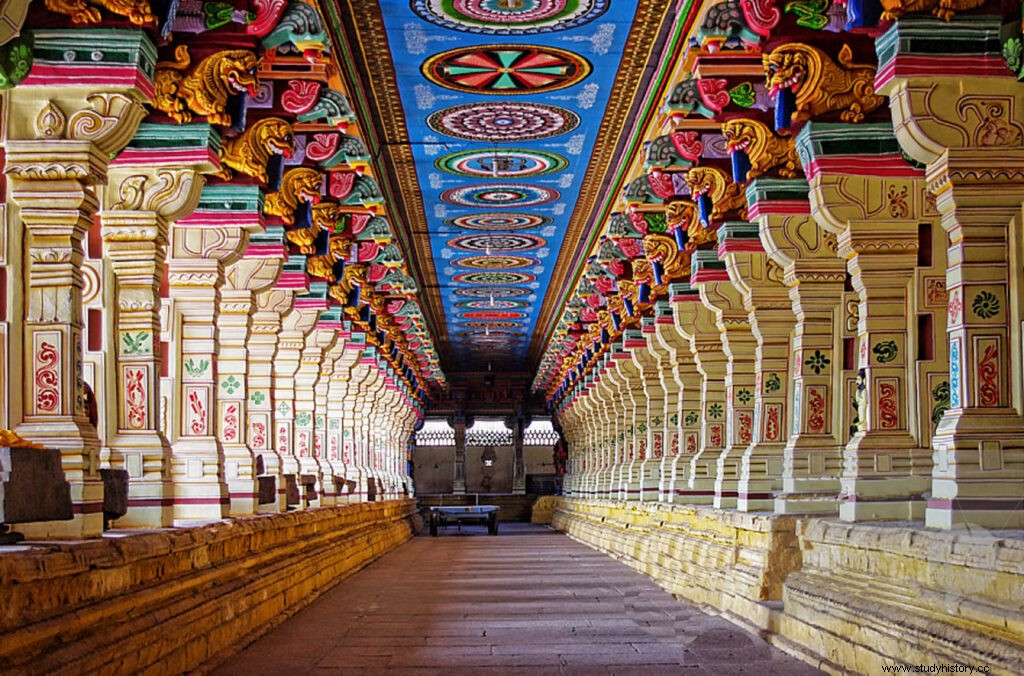
Vedic sculptures can be seen in the historical temples and buildings of North India and mainly in the temples of South India, which have survived the destruction. There are hundreds of such temples and buildings, including Khajuraho, Ellora, Rameshwaram, Meenakshi Temple, whose beauty is amazing and strong enough that they have been standing for thousands of years. Modern craft does not stop anywhere in front of them. According to the information received from the ancient Chausath Yogini Temple in Morena, Madhya Pradesh, copying which Edwin Lutyens built the Parliament House of India, the university was situated between Mitawali, Padawali and Bateshwar temples for the teaching of Vedic architecture.
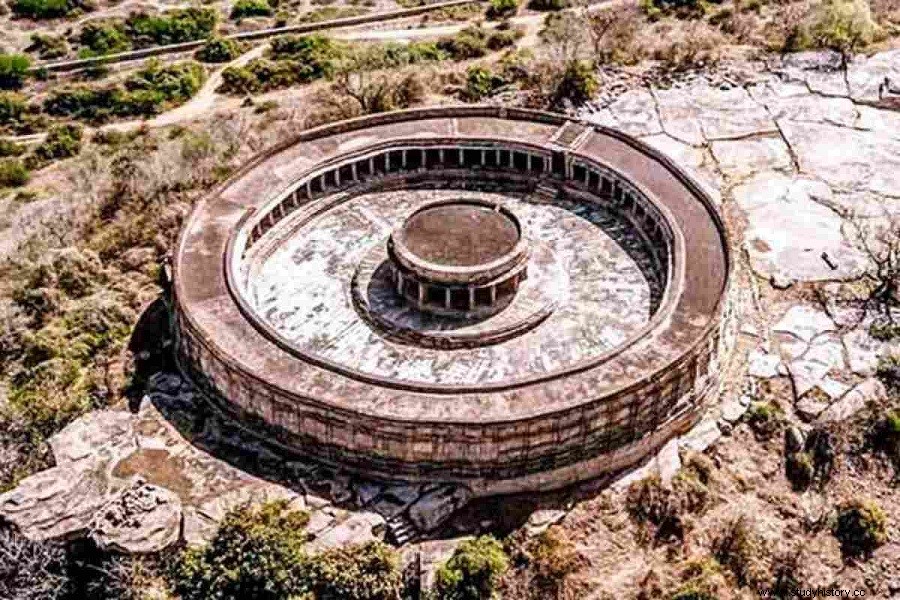
Robert Byrne writes in his book Introduction to Rome and the Campagna, "The Romans have been the best builders of the world, yet they could not build decorated or decorated buildings. . The grandeur of the buildings and the strange imitation of the Greek style, this was where their architecture was limited. In India, decorated or decorated buildings are visible on a large scale”.
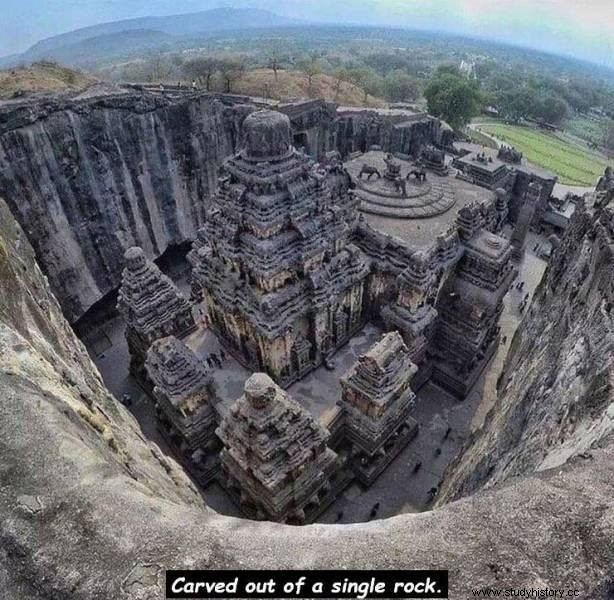
What is Vedic Architecture?
In Vedic architecture, a yogi sitting in meditation is imagined. Just as the soul resides secretly in the body, in the same way the idol is replaced in a small dark sanctum sanctorum inside the huge temple. The platform on which that building is built is considered to be its meeting place. The first floor is the abdominal place of that Vastu Purush. The second floor is the part of the chest, shoulders. The lower round part of the Kumbhaja (dome) is the throat of Vastu Purush and the head of the Kumbhaja. Inverted lotus flower on the Kumbhaja symbolizes the hair and on top of it is the symbol of Kalashdand Shikha.
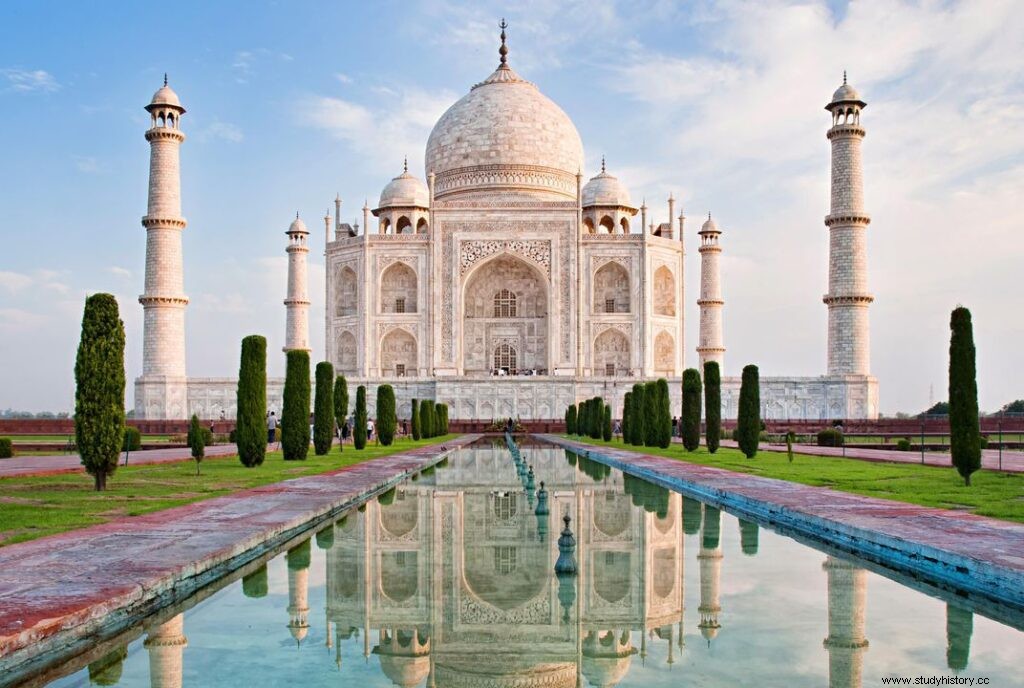
Therefore, all the ancient or medieval buildings built on this craft are in India or outside India, they are all Hindu buildings and you investigate them, they will prove to be Hindu buildings only. Also remember that all the buildings having three Kumbhaja (dome) are Hindu temples like temple of Ram, Lakshmana, Sita (so called Babri structure), Radha, Krishna, temple of Balarama (temple of Mathura birthplace), Shiva, Parvati, Temple of Ganesha (so called Gyanvapi Masjid, Kashi), Temple of Brahma, Vishnu, Mahesh etc.
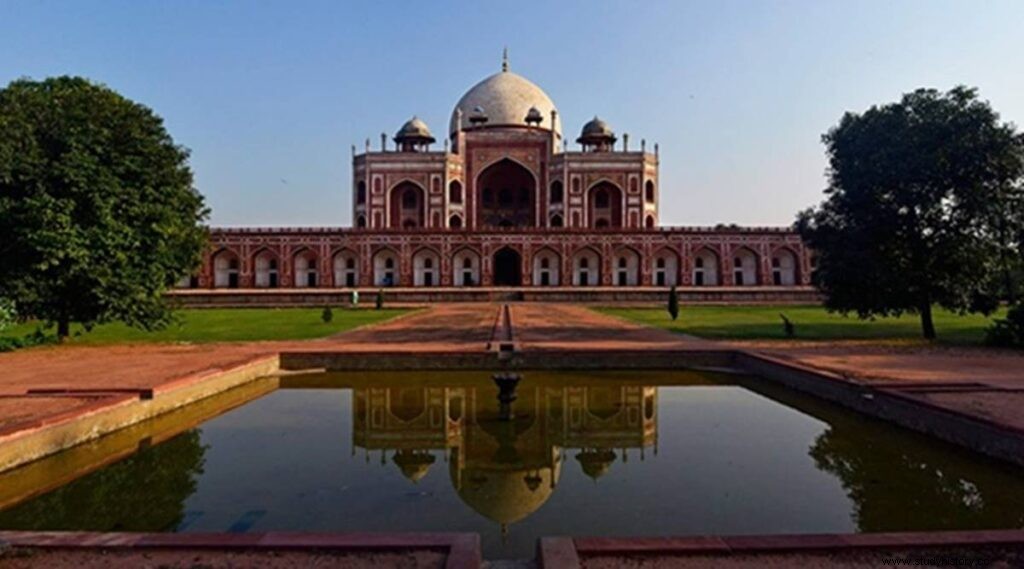
There was a temple of Nagardev or Ishtadev just in front of the palace built on Vedic architecture, such as the so-called Jama Masjid in front of Lalkot in Delhi (Taimurlang has written it as a big temple in his book - PN Oak), the so-called Jami in front of Badalgarh Fort in Agra. Masjid, in front of the palace of Fatehpur Sikdi, the so-called tomb of Salim Chishti (this was the Shiva temple for the family of Sikkar Rajputs - PN Oak) etc. The highway that serves them is the axis of the city. Right-left lanes of this highway are made. The city surrounding them had a thick wall like it was in Delhi, Agra, Pataliputra etc.
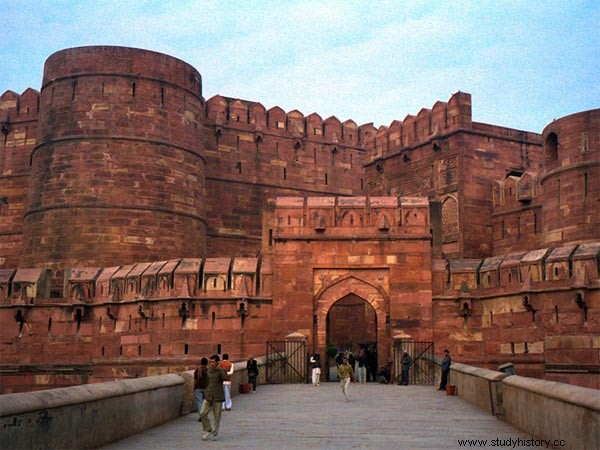
Vedic Pillar (Minaret)
If there is a staircase from inside in the pillar (minaret), balcony on each floor, chhatra i.e. Kumbhaj (dome) on the top of the tower, then they are the signs of the light pillar of Hindu architecture. It is also called a pillar. Like Leaning Tower of Pisa, Minaret of Ghazni Nagar of Afghanistan, Vishnu Stambha or Dhruva Pillar (Qutub Minar) of Delhi, Pillars located on the four corners of Taj Mahal, Shaking Tower of Ahmedabad etc.-PN Oak

The so-called Qutub Minar and Alai Darwaza, the Alai Masjid is actually part of the Vishnu temple complex. The Alai Masjid is actually the ruins of the Vishnu temple which was destroyed by the Muslim invaders. Here there was a huge idol of Lord Vishnu sitting on the bed. Qutub Minar which is actually Vishnu Stambha or Dhruva Stambha was situated in the middle of a lake which was a symbol of Kamalnabha. Brahma ji was seated on the lotus flower above the pillar, which was destroyed by the Muslim invaders. A pool-like path was made to go from the temple to the pillar. Astronomer Varahamihira used this pillar as an observatory. The 27 temples here symbolized the 27 constellations. Even today the name of that area is Mehrauli after the name of Varahmihir.
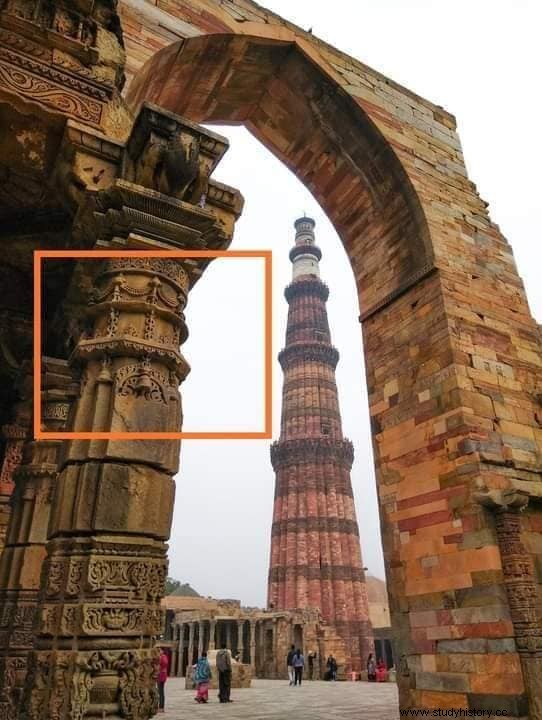
British surveyor Joseph Begler, in his survey report, has not only declared the entire Qutub Minar complex as a Hindu building but has also proved it, but unfortunately the Government of India, the Archaeological Survey of India and the leftist historians have forcibly declared it as a Muslim. Joseph Begler's report Archaeological Survey of India; Report for the Year 1871-72 Delhi, Agra, Volume 4, by J. D. Beglar and A. C. L. Carlleyle is available in the book which you can download at the link below, although the free PDF is not complete, it is better to buy and read.
https://www.forgottenbooks.com/en/books/ArchologicalSurveyofIndiaReportfortheYear187172_10019541
This huge temple was probably built by Chandragupta Vikramaditya, because the iron pillar here is that of Chandragupta Vikramaditya, it also shows from the excavation found inscriptions. Historian PN Oak has written that similar statue and temple of Lord Vishnu was in Mecca of Arabia, Vatican of Rome and England. The idol of Lord Vishnu is still kept in the museum of Spain.
All historical buildings are made by Hindus
Historian Purushottam Nagesh Oak writes, "From India to Arabia or Europe the ancient historical buildings which are said to be built by this or that Muslims belong to Hindus, even the Taj Mahal and the Red Fort"
1. The world expansion of the Suryavanshi people of North India can be recognized by their huge buildings. The thick walls of temples, palaces, forts etc., various construction works of public facilities which are found in the regions of Rome, Italy, Greek, Peru, Egypt, Ceylon etc., are astonished by their vastness. (Page-163, India in Greece, By e pococke)
2. The Celtic Druids, Writer-Godfrey Higgins, Picadilly, 1929 In the foreword to the book Higgins wrote, "The Buddhist (or Hindu) people of North India, who built the Pyramids, Stonehenge, Kornok, etc., were the world's fables ( Puranas etc.) whose source was the same and whose system was based on very high, beautiful, true elements - their glory is described in this book.
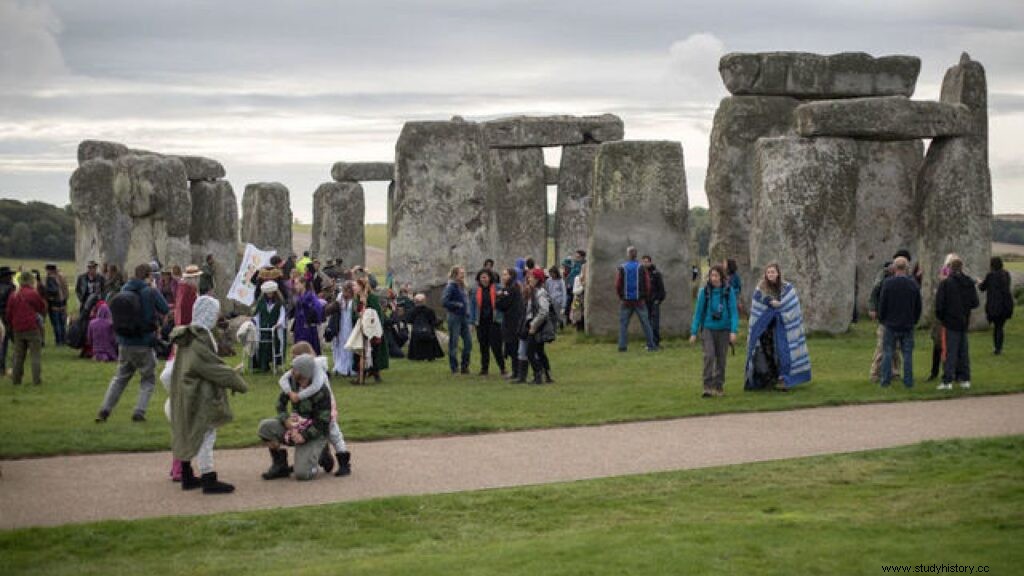
3. There was a Krishna temple in Egypt even during the British-French war - PN Oak
4. Forum Romanum is the oldest place in the city of Rome. That Praganam Ramanam i.e. the courtyard of Lord Rama i.e. was the place of Ram temple, which was established as the center of Rome city. Rome is also a European derivation of the name Ram - P n Oak
5. There is a region in Germany, Vaitland. There were found statues of six sages and Vedic temples.
6. In Antiquities of India (Vol. 6, Part 1, p. 246), Reverend Thomas Maurice wrote, “These priests (Druid people) were Brahmins of India. While spreading in the northern regions of Asia, they went to Siberia. My conclusion is that it was the first settlement of Asians in Britain."
The ruins of several Druido temples are still on the Isle of Man and the Anglesey Islands (Isle of Angelsey, in Wales, UK). Many of them belong to the Great Rocks such as those in ancient places called Abiri and Stonehenge. (same page 36)
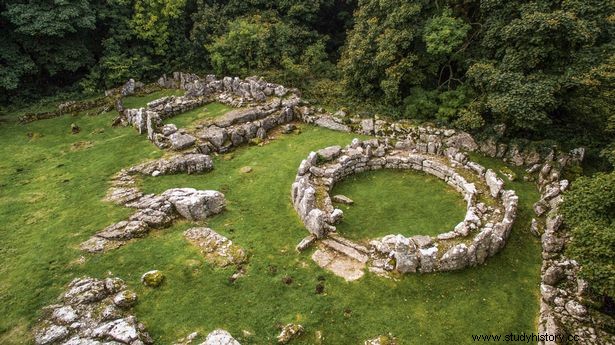
The ruins of the temple belong to the Vishnu temple. There Lord Vishnu was seated on the bed - P N Oak
7. It is mentioned on pages 43 to 59 of Higgins' treatise that "in the cities of Nagarkot, Kashmir and Varanasi in India, in the city of Samarkand in Russia there were large centers of learning, where there was a lot of Sanskrit literature." Similar Vedic literature and religious centers were also in the cities of Alexandria in Egypt, Rome in Italy and Istanbul in Turkey. As the people of that place became Christian and Islamic, the temples, texts etc. were all burnt.
8. St Paul's Cathedral Church in London was the temple of Gopal Krishna in ancient times. The ancient temple building was badly damaged by a fire around 1644. Despite the renovation of the temple, many signs of Krishna tradition are still visible - P N Oak
9. Jerusalem's so-called Dome on the Rock Mosque is an ancient octagonal temple. The rock or rock inside his dome was Swayambhu Mahadev. He is the deity there. Devotees worship and circumambulate him. In the later period some sentimental people started taking the pieces of that sacred rock home for worship, so it has been sealed with a lattice. Now people circumambulate the rock from outside the lattice. Obviously rock worship and circumambulation is the memory of the temple of the past, not the Islamic system of worship - P n Oak
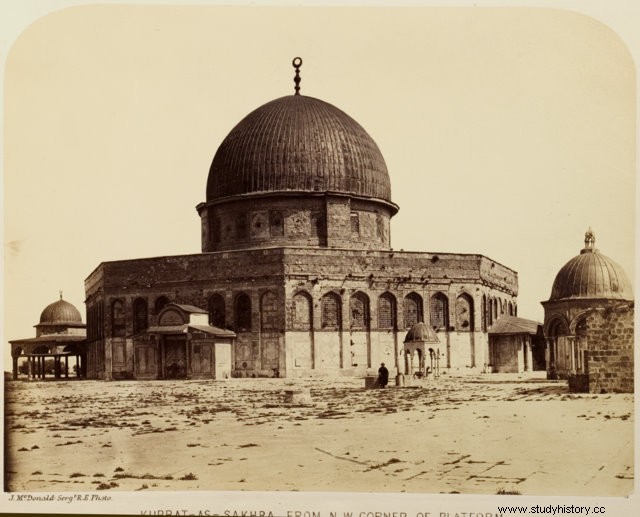
Sagadiana Rajkul is an ancient word of purification. Samarkand was a Buddhist city before the Muslims took over Samarkand and the king here was also a Buddhist. The palace of the last Buddhist king is now called the tomb of Timur Lang - P N Oak
10. There are thousands of temples of Vedic deities like Saraswati, Ganesha, Krishna etc. in Japan. The stamp of Murlidhar Krishna has also been published by the Japanese Postal Department with reverence. The idols of Krishna were in the temples of countries like Europe, Africa and they were known by the names of Radhamanthus, Heracles, Hercules, Hiram, Hermes, Krishna, Krista, Ishas etc.
11. In the city of Jinjiangchong, China, the idol of Lord Vishnu, about 71 feet high, was found. There the stories of Vishnu Purana, Shiva Parvati etc. were painted on Kailash. According to Dr. Yang Qin Zhang, the official of the museum there, a temple there is made of the Meenakshi temple style of Madurai, India - P N Oak
12. Its name is still associated with the city where Alexander traveled to see the temple of the god Shiva in Egypt. That city is Alexandria. The Shivling in the temples on the banks of the Ganges is also present in the Ammon temple of Egypt. (The Theogony of Hindus, Count Biornstierna)
13. It is mentioned in Siddiqui's article that the city of Baghdad itself is a Sanskrit name. Bhag and Daad mean God's given, that is, Bhagvadadat city. That is, Baghdad is a city inhabited by Hindus. Historian PN Oak writes, "The city of Baghdad was built by Caliph Al Mansoor in 762-63 with the help of Indian builders (engineers) and city builders, this is not true".
14. Unfortunately, vandalism is seen inside the temple located in Palmyra, Syria. Fanatic idol-breakers used to take such demonic pleasure in destroying beautiful artefacts as if they were doing great service to Allah. Its plight was further worsened by the use of the temple there as a mosque. There is a coating of mud on the carvings, idols etc. In the huge central hallway, a roof has been made with twigs, grass, etc. and animals are tied under it. (Remains of Lost Empires, Writer P.V.N. Myers, Page-34)
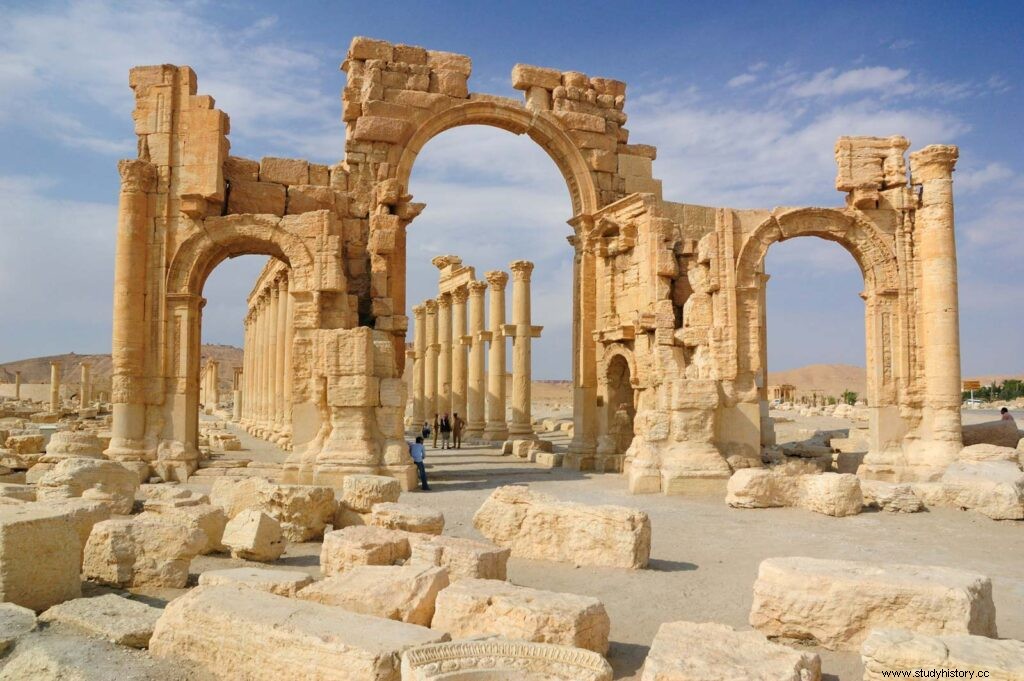
15. It is written in the Islamic Encyclopedia that Prophet Muhammad's grandfather was a priest of the Kaaba temple. He used to sit on a cot in his house or in the courtyard near the courtyard of the temple. There used to be 360 idols of God in that temple.
Anywhere in the world, the direction of the mosque should be in the direction of Mecca. But almost no building which is called historical mosque in the world is facing towards Mecca. The Kaaba itself is built on the astrological basis in such a way that one tip of the middle line of its width is in line with the sunrise horizon point of summer and the other is in line with the sunset point of autumn. At the time of Muhammad there were 360 idols in it. It was a place of sun worship. Its eight corners are related to the eight directions of air circulation. David A King, Prof. HKCES, Newyork City.
16. In Sweden there was a huge golden temple named Upsala. Till 1070 AD, the trinity Thor, Odin and Frey (Brahma, Vishnu, Mahesh) was worshipped, yagya was done, prasad was offered. Here the festival was celebrated every nine years. After that the Christian invaders destroyed this temple and hoisted the Christian flag there."
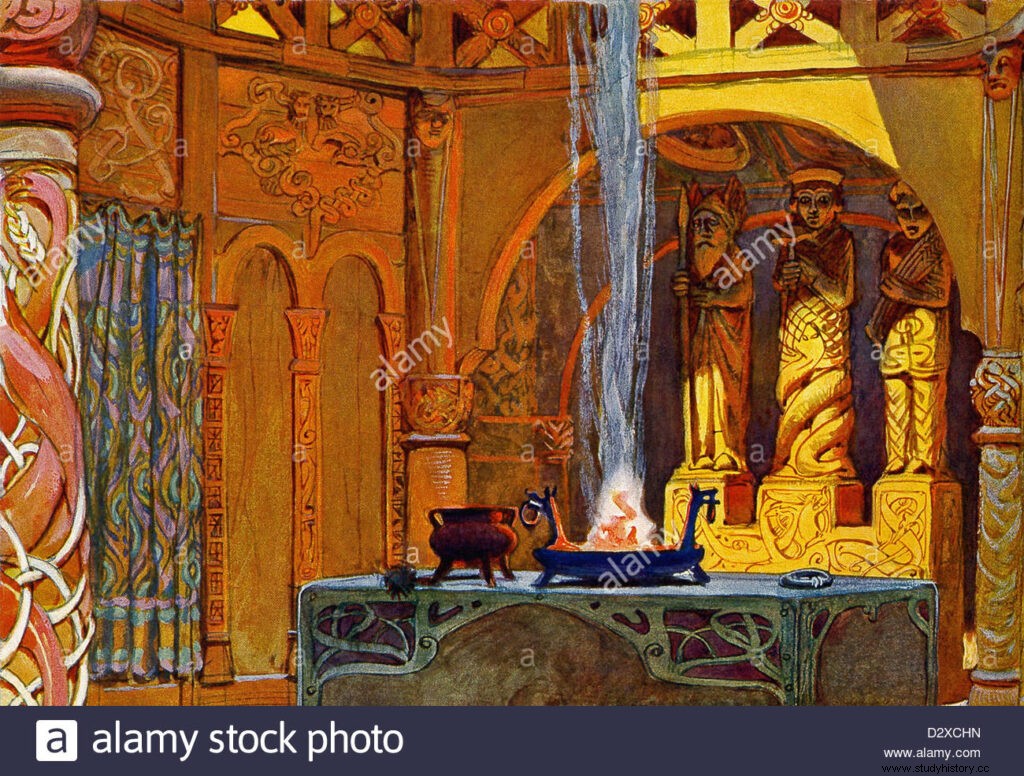
Click on the link below to know about Sweden's Upashala Temple in detail:
https://en.wikipedia.org/wiki/Temple_at_Uppsala
17. Strabo writes, following Hercules and Bacchus i.e. Tryambakesh, Alexander also established Dev Mandir alias altars on the borders of the conquered private territory of India. There were 12 temples of 12 gods and goddesses, each 50 cubits long - Strabo, Volume 3, page 257
18. There were sun temples and suryapuras at many places in Greece. There is also a word heli in Sanskrit for the sun. The city named Helipolis i.e. Helipur with the same Heli name is settled in Greece - P n Oak
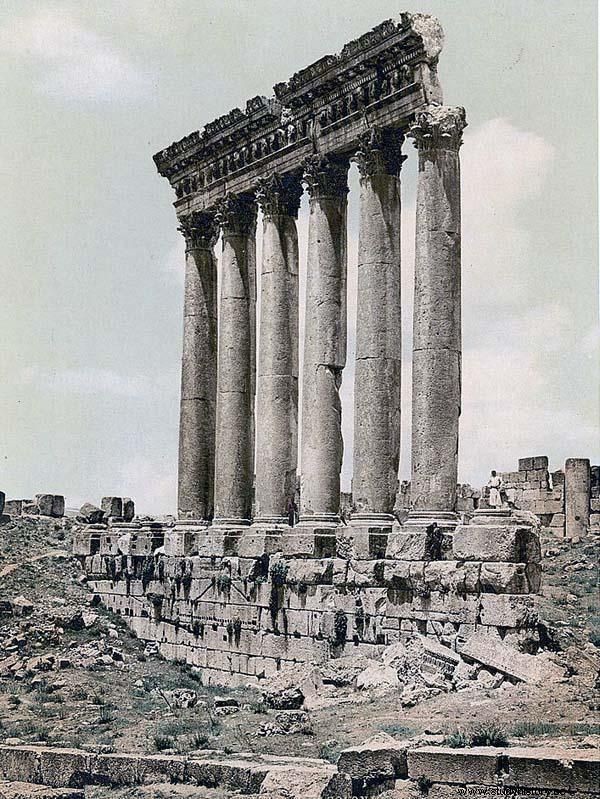
19. In front of Ramanagara (Rome) is the city of Ravana on the east coast of the Adriatic Sea. एडवर्ड पोकोक अपने ग्रन्थ के पृष्ठ १७२ पर लिखते हैं, “Behold the memory of …Ravan still preserved in the city of Ravenna, and see on the western coast, its great rival Rama or Rom”
20. St. Augustine नाम के एक ईसाई पादरी ने ईसापूर्व यूरोप में पूजे जानेवाले देवी देवताओं कि खिल्ली उड़ाने वाली एक पुस्तक लिखी है. उस पुस्तक का शीर्षक है The City of God’s. इस पुस्तक से रोम नगर में पूजे जानेवाले देवी देवताओं कि जानकारी मिलती है. Studio Pontica नामक पुस्तक में पृष्ठ ३६८ पर लिखा है कि किस तरह Trapezus के समीप के एक भुगर्भस्थ सूर्य मन्दिर को गिरजाघर बना दिया गया.
21. क्युमौंट के ग्रन्थ में पृष्ठ ८५-८६ पर उल्लेख है कि रोम नगर के जिस विभाग में Concord (शंकर) का मन्दिर था उसे Area Concordae (C का उच्चारण श करने पर “शंकरदेव परिसर”) कहा जाता था. कहते हैं Romulus ने वहां चार घोड़ों के रथ में आरूढ़ कुछ पीतल कि मूर्तियाँ प्रतिष्ठित कि थी और वहां एक कमल का पौधा लगाया था. रोम में तो कई मन्दिर थे किन्तु उनमे Jauns (यानि गणेश, ग्रीस में Ganus) का मन्दिर बड़ा ही प्रख्यात था.
ग्रीस और रोम में गणेश पूजन होता था. इसका इतिहास में उल्लेख है. ईसापूर्व काल में वही ग्रीस और रोम वाली सभ्यता पूरे यूरोप में था. “Ganesh..is depicted on a carving at Rheims in France with a rat above his head-Dorothea Chaplin, Matter, Myth and Spirit or Keltic and Hindu Links, Page-36
२२. Rome and the Compagna नाम का Robert Burn के ग्रन्थ के पृष्ठ ६०३ पर उल्लेख है कि विष्टु (अर्थात विष्णु जैसे कृष्ण का कृष्ट) का मन्दिर एक वर्तुलाकार इमारत होती थी. वह पृथ्वी के आकार कि इस कारण बनाई गयी थी कि उसमें स्थित विष्टु भगवान समस्त संसार के द्योतक थे.
बर्न एक सर्प मन्दिर का भी उल्लेख करता है और लिखता है कि “नगर के आश्चर्यकारी बातों में सर्प मन्दिर का उल्लेख तो मिलता है किन्तु यह कहाँ था इसका पता नहीं चलता है.” मेरा मत है कि सर्प मन्दिर भी इस विष्णु मन्दिर को ही कहा जाता होगा क्योंकि विष्णु भगवान कि कई मूर्तियाँ पूरे यूरेशिया में शेषशय्या पर मिली है-पी एन ओक
बर्न ने अपने ग्रन्थ के पृष्ठ २८८ पर लिखा है कि रोम नगर में एक बड़ा नाला है. उसके समीप डोलिओला नाम का स्थान है. सन ३८७ के गोट लोगों द्वारा किये गये आक्रमण के समय उस डोलिओला स्थान में विष्टु के मन्दिर के पवित्र अवशेष काष्ठ पात्रों में भर भर कर संरक्षणार्थ दबा दिए गए थे. पृष्ठ २९१ पर बर्न ने विष्टु के वर्तुलाकार मन्दिर का चित्र दिया है. उसे Hercules का मन्दिर भी कहा जाता था अर्थ वही विष्णु का मन्दिर.
रोम के प्रमुख देवता विष्टु अर्थात विष्णु ही थे इस बात पर जोर देते हुए बर्न महोदय पृष्ठ ३९७ पर लिखते हैं कि “टाईबर नदी के प्रमुख देव Hercules यानि हरि कुल ईश अर्थात विष्णु ही थे. इसी कारण लैटिन कवियों ने कई बार रोम नगर का ही Hercules कहकर उल्लेख किया है.” स्ट्रैबो ने भी लिखा है कि “उसके समय में टाईबर नदी दो बातों केलिए प्रसिद्द थी-एक उसका Herculeum अर्थात हरि ईशालयम (C का श उच्चारण) और दूसरा उस नदी का प्रपात. उस मन्दिर का एक ग्रंथालय भी था. जिस स्थान पर हरि ईशालयम सम्बन्धी अनेक शिलालेख पाए गए हैं वहीँ पर वह मन्दिर रहा होगा.”
२३. पहली शताब्दी ईसा पूर्व तक इटली के शासक Etruscan थे जो वैदिक संस्कृति के लोग थे. इन्ही Etruscan का वेटिकन में शिव और विष्णु का विशाल मन्दिर था जहाँ पापहर्ता पीठाधीश होते थे. वेटिकन पर जब इसाइयों ने हमला कर नष्ट कर दिया तो वहां के कुछ अवशेष जैसे कई शिवलिंग, पेंटिंग आदि म्यूजियम में सुरक्षित हैं. उन पेंटिंग में रामायण कि कथाओं के कई प्रसंगों के चित्र भी हैं जो वैदिक विश्व राष्ट्र का इतिहास भाग-३ में विभिन्न ग्रन्थों से लेकर दिए गये हैं.
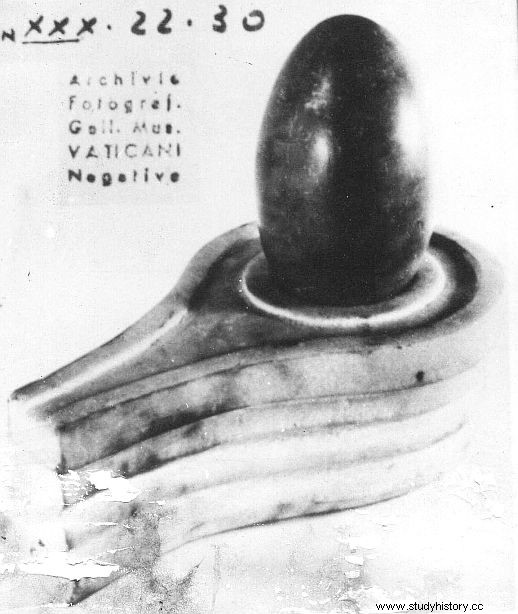
२४. स्पेन के सागरतट पर कैडिज नगर है. इसके समीप एक लम्बा, सुकड़ा भू-खंड सागर में दूर तक फैला दीखता है. स्पेन की परम्परा में वह पवित्र भूमि कहलाता है. हेरोडोटस ने लिखा है कि उस भूखंड में विशाल आकार का कृष्ण मन्दिर होता था. वह सदियों तक दूर से खलासी लोगों को स्पेन के किनारे का पहचान स्तम्भ हुआ करता था-पी एन ओक, वैदिक विश्व राष्ट्र का इतिहास, भाग-३
२५. स्ट्रैबो के ग्रन्थ के खंड १ में पृष्ठ २८१ पर लिखा है कि फ़्रांस के टुलूज (Toulouse) नगर में एक बड़ा प्रख्यात देवालय था जिसकी देवमूर्ति के दर्शन करने आस पास के प्रदेश के निवासी बड़ी संख्या में आया करते थे.
इतिहासकार पी एन ओक का मानना है कि वह देवालय तुलजा भवानी का मन्दिर हो सकता है और उन्ही के नाम पर उस नगर का नाम तुलजा नगर होगा जिसका फ्रेंच उच्चार Toulouse नगर है. ईसापूर्व समय में जब विश्व भर में क्षत्रियों का शासन था तब और आज भी भारत के अधिकांश क्षत्रियों की कुलदेवी तुलजा भवानी है. छत्रपति शिवाजी की कुलस्वामिनी तुलजापुर की तुलजा भवानी ही थी जो शोलापुर से 15 मील की दूरी पर स्थित है.
पेरिस का Notre Dame चर्च परमेश्वरी (जगदम्बा) का मन्दिर था. Notre Dame का अर्थ है हमारी देवी. संस्कृत में न:=हमारी, त्र=तारण करनेवाली और दाम-यह जगदम्बा का टुटा हिस्सा है अर्थात हमारी तारण करनेवाली देवी. मन्दिर को चर्च में बदलने के बाबजूद अभी भी दीवारों पर चौकोण, षट्कोण, अष्टकोण आदि देवी पूजन की यांत्रिक आकृतियाँ तथा सिंह वृश्चिक आदि बारह राशियों के चिन्ह अंकित हैं. परमेश्वरी देवी के मन्दिर के नाम पर ही फ़्रांस की राजधानी का नाम परमेश्वरीयम नगर था जिसका लैटिन अपभ्रंश पैरिसोरियम हुआ और संक्षिप्त पेरिस. वहां कुछ लोग अब पेरिस को पारि भी कहने लगे हैं. (वैदिक विश्वराष्ट्र का इतिहास, भाग-३)
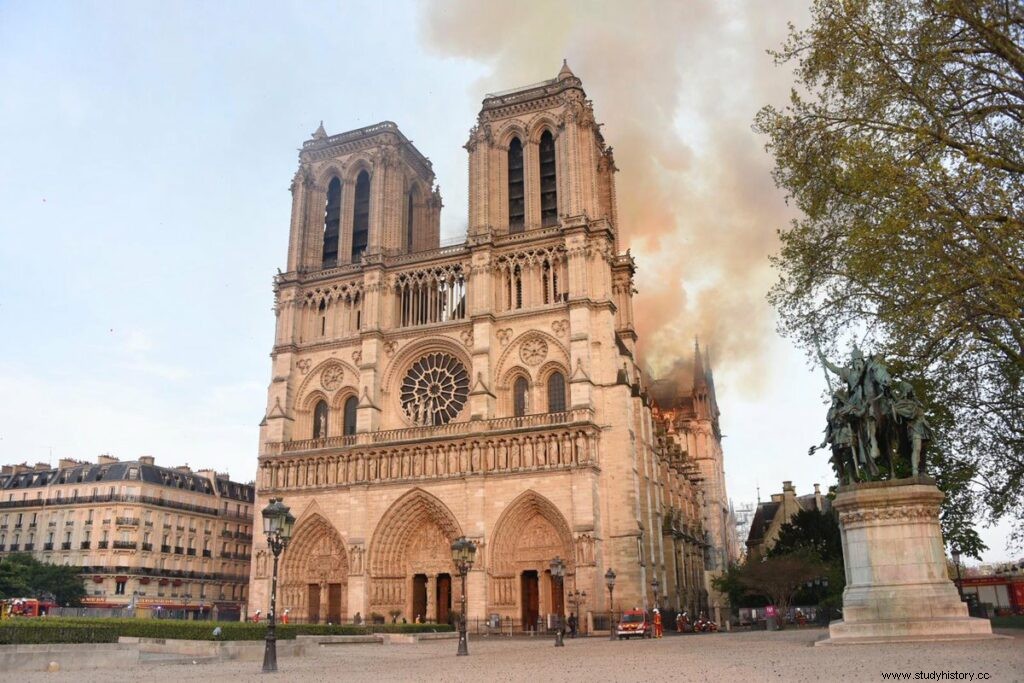
फिर भारत की ऐतिहासिक इमारतें किसने बनाया
उपर्युक्त से स्पष्ट हो जाता है कि कम से कम यूरेशिया में जो भी प्राचीन स्थापत्य के उदाहरण हैं वे सभी हिन्दुओं के द्वारा निर्मित हैं चाहे उन्होंने अपने लिए बनाया हो या स्थापत्यकला के वैश्विक व्यवसायी वर्ग समूह के रूप में हो. सवाल है जो हिन्दू पूरे विश्व में बड़े बड़े किले, भवन, मन्दिर आदि का निर्माण करते थे वे क्या भारत में निर्माण केलिए मुस्लिम आक्रमणकारियों के इंतजार में थे?
इतिहासकार पी एन ओक लिखते हैं, “भारत के ऐतिहासिक इमारतों को मुस्लिम इमारतें, मस्जिदें, मकबरे आदि होने का झूठ अलेक्जेंडर कनिंघम नाम के लुच्चे अंग्रेज जो दुर्भाग्य से भारतीय पुरातात्विक सर्वेक्षण विभाग का प्रथम अध्यक्ष था ने जानबूझकर फैलाया था. यहाँ तक की उनके सर्वेक्षकों ने जिन इमारतों को हिन्दू इमारतें पाया उन्हें भी डांटकर चुप करा दिया. जैसे की सर्वेक्षक जोसेफ बैगलर ने कुतुबमीनार और उसके आस पास के इमारतों को हिन्दू इमारतें घोषित किया तो धूर्त कनिंघम ने उसे चुप करा दिया”
कनिंघम के फैलाये उस झूठ को ही हिन्दूविरोधी वामपंथी इतिहासकार ज्यों के त्यों फ़ैलाने लगे. जब उनसे पूछा गया की उन इमारतों में जो शंख, चक्र, कमल, घंटी, स्वास्तिक आदि हिन्दू चिन्ह तथा हिन्दू इमारतों में स्तम्भों पर चारों ओर बनाये गये मानवाकृति, पशुआकृति; प्रवेश द्वारों पर हाथी आदि पशु क्यों बने हुए मिलते हैं जिन्हें मुसलमान हराम मानते हैं, जिनसे घृणा करते हैं तो उन्होंने कुतर्क किया की मुसलमान हिन्दू इमारतों को तोड़कर उनके मलवों से नई इमारते बना देते थे इसलिए ये चिन्ह रह जाते थे. जब यह साबित हो गया की तोड़कर गिराए गये मलबों से उच्च कोटि के बेहतरीन नई इमारतें नहीं बनाई जा सकती है तो कहने लगे चूँकि इमारत बनाने वाले कारीगर हिन्दू होते थे इसलिए उनमे हिन्दू प्रतीक चिन्ह होता है.

सवाल है, अंग्रेजों ने भी तो बड़े बड़े गिरजाघर बनाएं हैं और वे हिन्दू कारीगरों ने ही बनाया है. उनमे हिन्दू चिन्ह क्यों नहीं है? आज भी मुसलमान मस्जिदें बनाते हैं और बनाने वाले हिन्दू या हिंदुस्थानी कारीगर ही होते हैं तो वे मस्जिदों में पवित्र हिन्दू चिन्ह क्यों नहीं बनबाते? आक्रमणकारी मुस्लिम शासक आक्रमित काफिरों के पवित्र चिन्ह मस्जिद और मकबरों में क्यों बनबायेगा? वास्तविकता तो इसके ठीक विपरीत यह है कि तमाम अधिग्रहित हिन्दू इमारतें जो आज मुस्लिम इमारतें कही जाती है उनमे हिन्दू प्रतीक चिन्हों और मानव-पशुआकृतियों को यथासंभव तोड़ दिया गया है, उन्हें घिसकर मिटा दिया गया है या मिटाने की पूरी कोशिश की गयी है जो खुद उनकी चोरी को बयाँ करते हैं.
